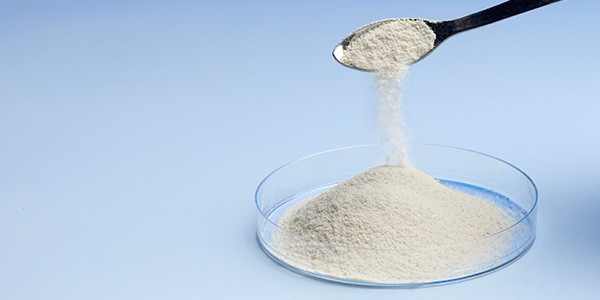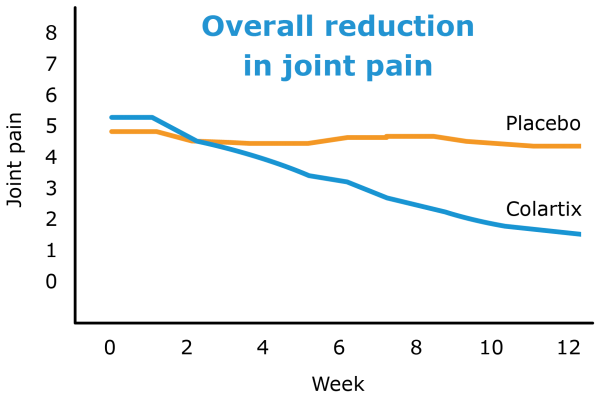Promotional Features
The growing joint health market is hungry for functional food and beverage solutions
Why do more and more consumers care about their joint health? It’s simple: joints are crucial parts of the body and are vital for overall mobility – and knowledge about this aspect of our physical well-being and performance is growing and spreading quickly. Without joints, none of our movements, from getting out of bed in the morning to hardcore athletic training, would be possible. The bad news: our joint health declines as we age, leading to issues like joint discomfort, stiffness, and decreased mobility. Other lifestyle factors, such as diet and sedentary behavior, can affect mobility too. It’s no wonder more consumers are turning to the supplement market to meet their mobility needs.
The numbers behind the growing joint health market
Bone and joint problems are a global issue, with almost 2 billion people suffering across the world, according to The Lancet.[1] A more detailed national breakdown confirms just how common these issues are:
- 50% of French people suffer from joint health issues[2]
- 1 in 3 Americans between 16-64 has experienced joint discomfort[3]
- Over 10 million people in the United Kingdom have joint problems[4]
These joint issues have many ramifications: from pain – sometimes severe – to reduced mobility, they can affect life in unpleasant ways. Perhaps this is why the monetary numbers for this market are also high, and rising: by 2026, it is estimated that sales values for mobility supplements will hit $15.6 billion, while the functional food and beverages market for mobility will reach $15 billion.
Meeting the needs of a diverse market
As joint health issues are so widespread, the market for mobility supplements is wide-ranging. There are numerous distinct consumer segments manufacturers should be aware of, each with different wants, needs, and aims. Here are some of the prominent consumer groups:
1. Healthy agers
As the population is aging globally, ideas around aging are shifting.[5] More consumers want to stay active and mobile for as long as possible, preventing the natural effects of aging from negatively impacting their lifestyles. For these healthy agers, joint health supplements are a way of treating any current issues: they use them to remain mobile, while also hoping to prevent serious issues down the line. With over 1 in 4 people reaching the age of 60 or older by 2050, this market is likely to keep growing.[6]
2. Athletes
While professional athletes have long been aware of the importance of sports nutrition solutions, now, more active consumers – from fitness fans to recreational sports lovers - consider looking after their joints to be essential. Whether they want to keep up with a demanding fitness regimen, improve their performance, or avoid joint injuries, these consumers want effective supplements that can boost their mobility.
3. Health-conscious and lifestyle users
For this group, looking after their joints is another important aspect of staying healthy. For example, a consumer could be overweight or a weekend warrior, and be looking for supplements to help ease the strain on their joints. Or, they could be one of today’s mobile consumers using digital tracking to enhance their fitness levels – and looking for supplements to back up their lifestyle.
For more joint health consumer profiles, visit Rousselot.com:
Overall, despite the different consumer profiles, there are some unifying demands across all three groups. Today’s consumers want a safe, fast-acting product in a convenient application, with both joint maintenance and issue prevention benefits backed by science. How can today’s manufacturers make a solution that meets these needs?
Choosing the right ingredient for a joint health supplement
Manufacturers seeking to create an application that appeals to today’s joint health consumers must understand consumers and select the ingredients that match their needs. One example that is gaining a lot of popularity across the various consumer segments is collagen. A naturally-occurring protein, collagen plays an important role in the body, being the key structural component of cartilage tissue, and therefore crucial to healthy and flexible joints. A growing body of research is showing that, beyond its natural form, collagen supplementation can help muscle, joints, and bones to work together smoothly by providing structure, firmness, and resistance to compression. Consumers are warming up this kind of knowledge and buying into a growing range of collagen solutions. For manufacturers, collagen offers the benefits of a versatile ingredient that can be used to make tasty and convenient functional foods and beverages that suit each consumer group. For example, collagen can be used in functional gummies or liquid shots, or be integrated in protein bars for a joint health-boosting snack as well as in recipes for home baking.
Introducing Colartix: a new joint care innovation that answers consumers' needs
An example of an ingredient ready to meet the market is Colartix, the latest joint health offering from Rousselot Health & Nutrition. Derived from natural cartilage, Colartix is made from naturally occurring collagen and glycosaminoglycans (GAGS), both suited to modern joint health applications. It is produced through a specific technological process developed by Rousselot, with a patent application filed. Designed for today’s consumers in mind, Colartix is a safe, traceable, and versatile ingredient that can help manufacturers meet the needs of each joint health market segment. And, it’s been backed by science too: one recent large-scale consumer study showed that a low daily dosage of Colartix can reduce joint discomfort after just 3 weeks.
Tested by real people living their everyday lives
Colartix’s joint health benefits were recently put to the test in a digital consumer study. Over 200 participants across all genders and ages took part, monitoring the impact of Colartix on their joint pain after a range of physical activities, from gardening and walking to weightlifting and swimming. After 12 weeks of a low daily dose of 1g, Colartix supplementation resulted in a steady decrease of joint discomfort after exercise, while the placebo group remained the same over time, as shown in the graph below.[7]
Meeting the modern consumer
The joint health market offers exciting opportunities to manufacturers, with consumers in different segments looking for preventative and maintenance solutions for their joints and bones. By making versatile, effective, and science-backed functional food and beverage applications, manufacturers can meet these consumers where they want to be met, merging indulgence and real benefits. Collagen is a good example of a joint health ingredient being applied by many manufacturers today. With a collagen solution like Colartix, it is easier than ever for these manufacturers to create applications that truly appeal to the modern mobility consumer, helping them to support their joints, and enabling them to stay fit, healthy, and active.
Find out more about answering the joint health concerns of today’s consumers with Colartix here, with a free recipe download for a fruity joint treat with Colartix inside: colartix.rousselot.com/colartix-unique-collagen-matrix-for-joint-care; or, discuss your joint health project with today: www.rousselot.com/contact
[1] The Lancet, 2012.
[2] Institut français d'opinion publique, 2016.
[3] Arthritis Foundation, Jafarzadeh, 2017.
[4] National Health Service, UK.
[5] ‘Ageing and health’, Fact Sheet, World Health Organization.
[6] Ibid.
[7] Newman, C. et al. 2022. The effect of a natural matrix of collagen types and chondroitin sulfate supplement on joint discomfort in physically active adults: a real-life setting study. Submitted to publication.




